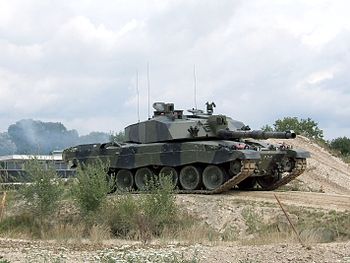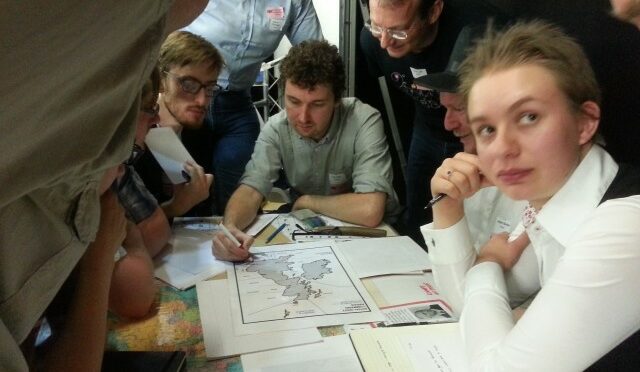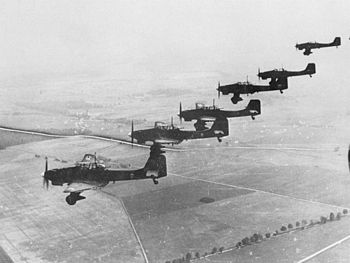Tag: Royal Navy
-

Mass mobilisation for World War Three?
Mass mobilisation for a world war level conflict would need the country to repeat what it did for WW1 & WW2. Discussion I’ve read on twitter amongst those interested and knowledgable about defence (a mixture of serving officers, military historians and political observers) suggests that Britain has a real problem with the level of defence…
-

Megagame Don’t Panic offside report
Last Saturday I was political control for the megagame Don’t Panic. As mentioned previously this is a what if megagame about the German Invasion of Britain in 1940. The scenario necessarily changes history to remove some of the most obvious reasons why the Germans didn’t ever try this during WW2. Anyway my role was to…
-

Could there have been a German Invasion of Britain in 1940?
Next week’s megagame Don’t Panic is an alternative history megagame about the German Invasion of Britain in 1940. It’s a popular what if and makes an interesting game for us British because the playing area is familiar to us from our everyday lives. At least it is familiar if you live in the South East.…
-
Book Review – Fatal Choices by Seth Owen
Fatal Choices: Wargames, Decisions and Destiny in the 1914 Battles of Coronel and Falklands by Seth Owen My rating: 5 of 5 stars I backed the Kickstarter campaign and got both the ebook and the paperback version of this as well as some pre-cut counters for playing the scenarios. The book is a fascinating tour…
-
Megagame: Iron Dice – Turn 10
Third week of October 1914 BEF Report to the War Office The Belgians on our left were attacked and driven out of their trench line, and retreated towards Calais. The BEF left flank is, although entrenched, hanging in the air again. BEF reserve troops are at St. Omer. A request to the navy is made…
-
Megagame: Iron Dice – Turn 9
Second week of October 1914. BEF Report to the War Office BEF’s part of the front aint as big as we thought it would be, we cover it to Bapaume. Team Control Gloss Well this was where I stopped following the team very closely and handed over to Paul, one of the map umpires, for…
-
Megagame: Iron Dice – Turn 8
The first full week of October 1914. BEF Report to the War Office Orders are to entrench from south of marshed terrain In Dixmuiden towards Arras. Right flank tries to attempt a limited attack from Arras and surroundings directioned to the east to conform to the German line. It seems that a solid trench line…
-
Megagame: Iron Dice – Turn 7
29 Sept to 4th October 1914. BEF Report to the War Office Some more confusion, Germans frontline is from the Marsh area (Dixmuiden) to the South, direction Arras (which the Germans appear to have abandoned?) which means that the British advanced somehow without orders to do so. It seems that a change in warfare is…
-
Megagame: Iron Dice – Turn 6
The last full week in September 1914. BEF Report to the War Office 30th September 2014 While taking the new positions, the BEF was attacked by the Germans, Arras was lost but the German casualties were high. British right flank doesn’t have contact with the French. On the political point, the Belgiums requested to the…
-
Megagame: Iron Dice – Turn 5
Third week of September 1914. BEF Report to War Office 23rd September 1914 Situation Due to the fact that both the Belgians collapsed to the left of us and to the right of us the French 6th Army were thrown back as well, the BEF was in a difficult position. With bravery and in coordination with…
-
Megagame: Iron Dice – Turn 4
8-14th September 1914. I didn’t get a picture of the main control map this turn, so you’ll need to use your imagination. BEF Report to the War Office 14th September 1914 Situation We have attacked the German First Army on our Right flank. They were numerically superior (Five Corps to our three) but we managed…
-
Megagame: Iron Dice – Turn 3
The first week in September 1914. BEF Report to the War Office 7th September 1914 Situation We have moved up into a line between the coastal marshes at DIXMUDE to LILLE. Two corps of the German First Army are on our Right flank and we intend to attack them in the flank. We believe that they…